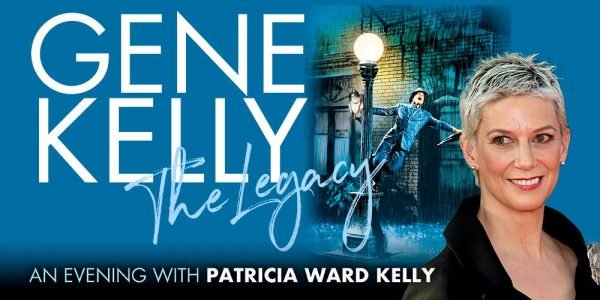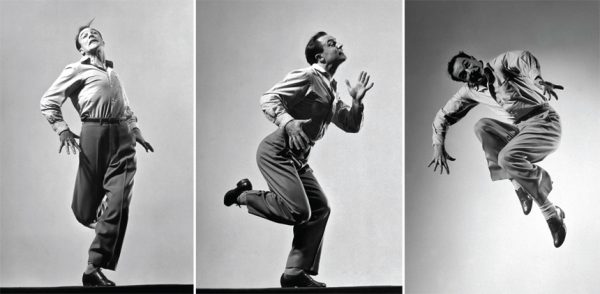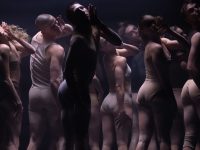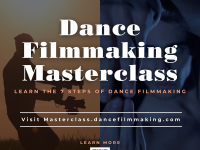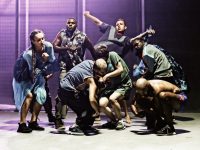Patricia Ward Kelly Shares Her Memories of Gene Kelly … Her Husband, The Dancer, Creator and Film Innovator
First Australian Speaking Tour
Interview and article by Heather Clements
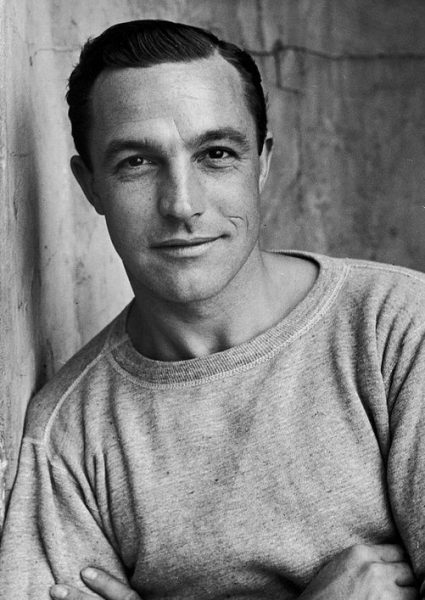 The late, great Gene Kelly was a dance and performance genius. No argument. The fact that his body of work and legacy remains relevant 25 years after his passing is simply astonishing … just like the man himself. Few other dance artists can claim the same distinction. What is also astonishing is the fact that when Patricia Ward met Gene for a research job in the 1980s, she had no clue as to who her new work colleague was.
The late, great Gene Kelly was a dance and performance genius. No argument. The fact that his body of work and legacy remains relevant 25 years after his passing is simply astonishing … just like the man himself. Few other dance artists can claim the same distinction. What is also astonishing is the fact that when Patricia Ward met Gene for a research job in the 1980s, she had no clue as to who her new work colleague was.
Patricia Ward met THE Gene Kelly when she was in her twenties as a self-confessed research nerd taking up a job as a writer on a TV special featuring Gene. While she may not have known who she was working with at first, they made a special connection and were married five years later in 1990 ⏤ he was 77 and she was 30 ⏤ and she began recording Gene’s words and memories every day during their ten years together. He passed away 2 February 1996 at the admirable age of 84 years.
Despite her initial ignorance of Gene’s identity, accomplishments and history, Patricia soon came to understand and appreciate her husband’s importance in the dance world and, thus, set about recording and documenting his life’s achievements. She spent hours over many years speaking to Gene and his past associates to put together the most accurate version of his life experience as possible. Now, audiences get to experience the closest thing possible to actually meeting their dance idol, Gene Kelly, by listening to the first hand accounts from Patricia Ward Kelly in her intimate, one woman show ⏤ GENE KELLY: THE LEGACY – AN EVENING WITH PATRICIA WARD KELLY.
DanceLife was privileged to be able to speak to Patrica Ward Kelly about how she is working to keep Gene’s talents and legacy alive in today’s very different world of dance, whilst also celebrating how far dance has come today.
Patricia is hosting 3 intimate shows discussing the life of Gene Kelly in Sydney, Melbourne and Brisbane next week. BOOK NOW!
****
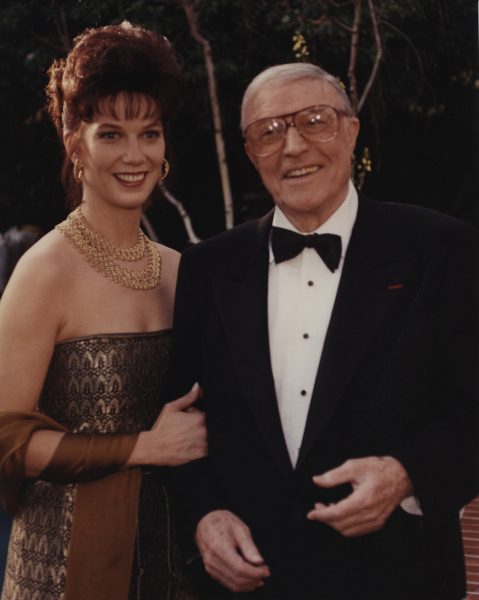 Q: Like many people around the world, I’ve such fondness for Gene Kelly, and I was just thinking it’s a shame he’s not here now to see what’s happening in the dance world and with the musicals today. Do you agree?
Q: Like many people around the world, I’ve such fondness for Gene Kelly, and I was just thinking it’s a shame he’s not here now to see what’s happening in the dance world and with the musicals today. Do you agree?
I do. I think it’s very hard for people to even imagine now that there was a time you couldn’t even see dance unless you were in major capital cities. You couldn’t just turn on the TV and see dance like you can today. You see everything from hip hop and break dancing to classical ballet and it’s really quite extraordinary. Gene would have loved that.
And then, there are the innovations … people have just continued to do different things. To take what Gene did originally, and take it beyond … and I think he’d be very happy to see that. I think what he really would have loved is seeing all the young people really looking up to him and looking to him for guidance.
Fortunately, you have people in companies deeply inspired by Gene like Matthew Bourne and The Australian Ballet. And so, they all essentially carry on his tradition, but I think it would be really fun if he were here to see it, obviously.
Q: You mentioned that he’s still so revered by people of all generations, especially dancers, and they still cite him as an inspiration. Why do you think he’s so relevant still today?
Well, I think in part because his work was always so far ahead of its time and just so creative … he said that the difficult thing is to create something that is both contemporary and timeless. Contemporary dance now is great, but will people be watching it in 70 years like they still do Gene’s? And for some reason he had a sense of something that would last, that had a heart, that continues to go on and be enjoyed.
And the young people today look at him and just think “Wow!” He looks like he just stepped out of a catalogue… He’s wearing Converse tennis shoes, he’s wearing what they’re wearing now, he’s wearing baseball caps and cool sweaters and scarves and things. And so, I think he doesn’t look as dated as some of his contemporaries do. And then, he’s also dancing to jazz and he’s dancing to a music that doesn’t really have a shelf life.
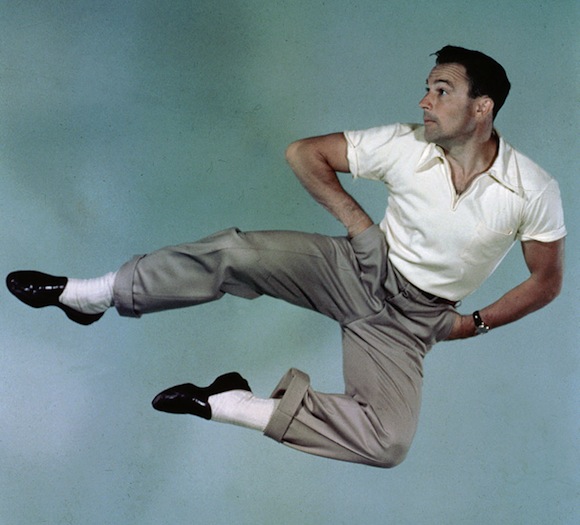
I think people just love the American popular songbook, and so we’re really lucky, because he is sort of perennial … evergreen. It’s a nice legacy to represent. But it’s not a hard one to push, and every age responds to him. People come to my show from 5 to 95 year olds, and all in between. And they all get it. He resonates with everybody. That’s really rare. But he would’ve been happier to have been known more for being the person behind the camera.
Q: All the other classic icons from that era are very dated now … I mean, like the younger generation just don’t have the fascination for the likes of James Dean or Marilyn Monroe … but Gene just seems to keep on keeping-on in the dance world?
Young people really get this show. It’s really interesting… I have young people who’ve come to my show five or six times. And a lot of people say to me, ‘Young people wouldn’t have the attention span for it.’ And no, they’re glued to it! I think they’re looking for stories, content, and they’re looking for that camera that stays right on that dance instead of cutting away. And his athleticism! You see Gene doing acrobatics, gymnastics, Spanish dance, ballet, tap dance, jazz … all in just one sitting, you see this whole range of choreography.
Q: What was Gene’s early training and exposure to dance?
He was a classically trained ballet dancer by a woman named Berenice Holmes, who was trained by the great Russian dancer, Adolph Bolm. Therefore, Gene had this very strong Russian ballet tradition.
He always wanted people to have classical ballet training, because he believed you needed to start with that line, before you can begin to break that line. He was studying in Chicago with Berenice in the 1930s. And he was just like a sponge; he went to the University of Chicago’s library and read all of the history of dance in French!
He was very inspired by the likes of Bill Robinson and Bo Jangles. And so travelling acts like Bo Jangles would come through Pittsburgh, and Gene would go down to the local theatres and watch them. And again, just like a sponge, he would absorb things and then make them his own. And so, you see bits of Bill Robinson in some of the steps in the classic Singin’ in the Rain dance number.
He just looked at every form of movement, but honestly, the style of dance he created was rooted in the sports that he played. Because there was no model for him at the time, and so he thought… “How does the American male move?” There was no model. He didn’t want to dance like a European. So, he looked and made his own style of dance based on sports moves and if you look at his dancing, it’s very broad, with wide-open strokes, and very low to the ground. In fact, he was inspired by hockey and baseball.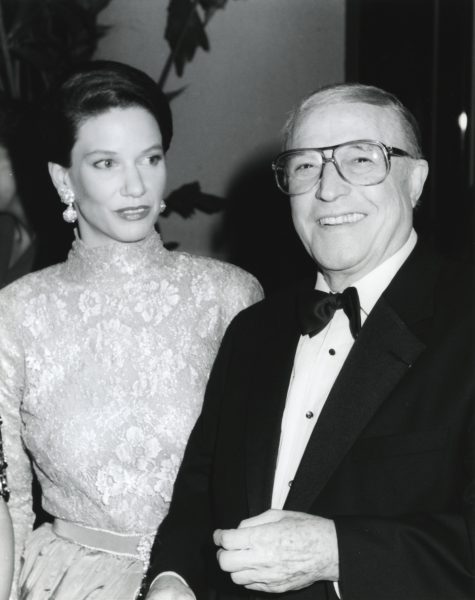
Q: In retrospect, when you look at his work, movies and his choreography, they were really cutting edge and risky. Would you get a 17-minute dance routine in a movie today? [ref: An American In Paris]
No! And even at the time they wondered if it would work because it was so radical. And people forget how revolutionary it was for him to dance with himself in Cover Girl – it was truly a feat at the time. And the complexity of Gene dancing with Jerry The Mouse animation in Anchors Aweigh at the time was charming, but people have no idea how complex that was, and Gene made that happen.
It was unknown territory; they did not know when they put that 17.5 minute ballet up on that screen if the audience was going to walk out. They had no idea how people were going to respond, even Irving Berlin met Gene and said, “I hope you know what you’re doing kid, because that’s pretty radical.”
Q: And there was no digital technology back then either?
Exactly, there was no computer to double himself then. Which makes me think … I’m always reading stuff about Gene’s perfectionism and he being a task master and difficult… and if I think about it, he had to be because he didn’t have a video playback then, so you couldn’t look in a screen and see what you just shot. You had to rely on the fact that you are on the mark, and the camera hit its mark. That’s why he was a perfectionist. There weren’t any re-dos.
Q: Gene created some beautifully iconic dance movie moments, what do you think he would still appreciate now?
I look at some of those sequences now, and they still hold up. They are still fresh. There is nothing dated as far as I’m concerned. You could put that up on a contemporary stage now. As much as we have advanced with certain styles and made it more accessible to the younger generations through social media, there is still such an appreciation for the true art form that he was involved with.
I think people are really yearning for it … they’re yearning for the music, for the lyrics, for the storytelling, just to be transcended. Even Brigadoon! … It’s funny, the film critics always loved to pan Brigadoon. And Gene said, “But I don’t understand, it’s two of the best pas de deux I ever did on film!” [ref: with Cyd Charisse performing ‘Heather On The Hill’]
Q: Yeah, actually I think it’s time for a revival of Brigadoon.
They seem to be doing so much of that, and it’s a hard one, because as Gene said it was not a dance picture. It was originally a singer’s piece for Broadway. And so, to transform it was difficult, but when you look at it, when you watch them, they’re dancing. And he said it was just remarkable that Cyd Charisse was dancing on these rocks and on the dirt with her shoes.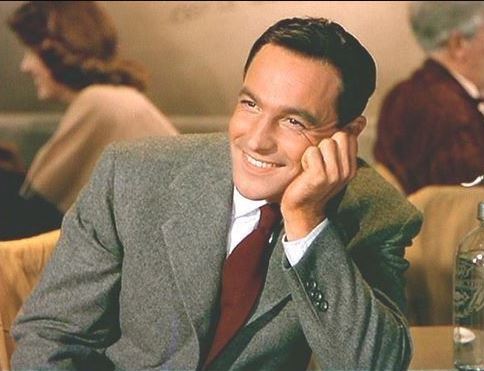
And really, no one had taken the dance into that kind of setting. And to choreograph it, when you look at it, it’s just so beautiful. And I put up a post of the scarf number from Singin’ in the Rain and just a segment of it, the beauty in that, it’s amazing when you see his leg bending and he’s lifting her and raising her with this power, this wind. I don’t think that will ever go away. I don’t think the power of that will go away.
Q: Is it true that when you met him, you didn’t know who he was or his background?
(Laughs) Yes. It is absolutely true. I find it very hard to believe now. I think it was the right way to meet him, because he was a blank slate to me. I started at square one with him. I was a flat-out very nerdy ‘Herman Melville’ scholar, the American writer, and spent my waking hours in the libraries. But it actually was really good training for the work that I ultimately did with Gene.
He was so tired of all the bad gossip about him. And he just wanted to set the record straight. And so, by bringing me on board, I just applied that same type of research. So, he would tell me a story, I’d record him, but then because I felt it was important to double-check and make sure that it was accurate, I would go check the production notes at the USC library here.
Or I would go interview the sound engineer or the trumpet player. And Gene was pretty spot on… I think because he’s directing, choreographing and starring in the pictures, I think he’s watching the production schedules, he’s watching the budget, he’s rehearsing, he’s choreographing, creating the things, he’s setting the camera angles. So, I think he had a much deeper knowledge of everything that was going on than anybody else. He wasn’t a guy to elaborate. He just told the story, and there was no need to embellish it.
Q: Considering stories like Billy Elliot are still so relevant, why do you think there is still stigmatism about boys dancing? And how did you find the reaction to the news fuss in the US about Prince George taking ballet? [ref: Good Morning America]
Yeah, and that was interesting … I just responded online to an American news hosts’ reaction to a boy dancing and it went viral. It was interesting. It made me reflect on the fact that back in 1958 Gene made a television special called ‘Dancing: A Man’s Game’. He detailed the history of dance, and the fact that it started with men and that women weren’t in it originally. And I think it would have been really interesting if the woman on Good Morning America, instead of just hearing her quiet apology … I thought it would have been better for her to say ‘why don’t we begin to educate people about the history’?
Gene tried to do it back then, and I think we can do that again. We need to go back to that, so people begin to understand that this was something that was very natural for men. And it was men in battle, it was men going to war, men fencing. And the same footwork used for fencing as they began to use them in classical ballet, moving sideways so less of your body is exposed to the opponent.
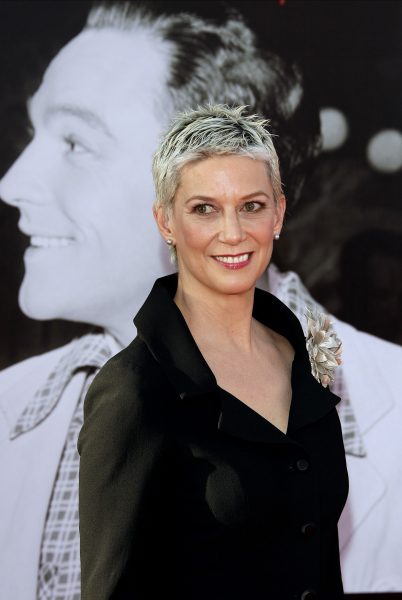
And if it’s presented in those terms, I’m wondering if there wouldn’t be a way to take some of the stigma away. Gene did it back in 1958, and then showed the connection between the athlete and the dancer and then showed that the movement is exactly the same. I’m actually talking to Jason Gilkison about working on a project to bring this forward fairly soon because I think it’s time to educate the public. Because I agree, why on earth are we still talking about it in this same format?
Q: Do you keep up with what’s happening in the dance world and male dancers today? And if so, who do you think Gene would be really supportive of today in the current dance world?
Well, I think he would follow a lot of companies. Obviously, as I said, I was lucky that I think 81 people from Australian Ballet came here to have breakfast and saw Gene’s archives, and Gene would be very impressed with that company. And also Matthew Bourne … Matthew is a kind of ‘heir apparent’ to Gene in some ways. I think in a sense that he’s taken a lot of Gene, but he’s also going beyond. Gene didn’t want people to imitate him.
He wanted people to go carve your own new world. And Gene would have loved Joffrey Ballet and San Francisco Ballet. You’ve got a lot of very strong male dancers there. Herman Cornejo who just celebrated his 20th year at American Ballet Theatre and he was a roller-skater! I gave him a picture of Gene tap-dancing on roller-skates (because) Gene was a huge influence on him.
Also, Fabrice Calmels at JoffreyBallet , the tallest ballet dancer at 6 foot 6 inches (!) … he just fell to his knees when he met me talking about Gene. Gene is his idol. And I think a lot of people don’t think of Gene being an influence on a classical dancer, and yet, he is the reason that many of them got into dance in the first place.
Q: Matthew Bourne might be the heir apparent, as you said, but it’s interesting that nobody has really filled that (Gene’s) space.
No. Gene kept waiting for the next guy to come over the hill. At one point he thought Gregory Hines might be the one to do it, but Gregory just died way too young. It’s very hard to find a triple threat … it’s very hard to find a ‘septuple threat’, because Gene didn’t just dance, sing and act he also directed, choreographed, wrote and produced.
I think now you might find somebody who’s a sublime dancer, but they can’t sing or act. You might find somebody who can act, but they can’t dance or sing. And they’re not creating their own choreography and they’re not able to direct the camera in it. So, he was kind of a rare bird, I think.
Q: I think he had to do it all because nobody else at the time could do it.
You hit the nail right on the head! That’s exactly what it was, because he wasn’t even that crazy about performing. He never really wanted to be a performer. He wanted to create it. But he would have preferred that somebody else could be there, doing it.
Q: What can people expect when they come to see you in Brisbane, Sydney and Melbourne?
I think they will come away with an understanding of Gene that – even if they think they know him or know his work and like him – a lot of people will come away saying “I love him even more now.” Because they come away understanding the many dimensions of this creative artist.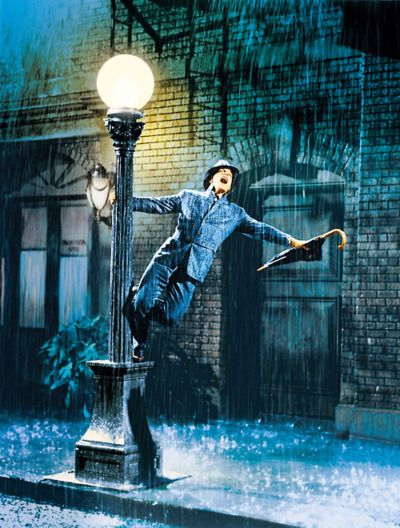
They will know not only how he did what he did, they will understand why he did it and what propelled him to do it and what drove his heart and what drove his mind. It’s a very intimate experience. It’s not really a show … it’s like we’re all sitting in the living room and he unfolds in front of them. And they come away feeling that they know him much better.
And then, they get to take him home, in whatever way, whether that’s in his romanticism, in his poetry, in his Valentines, whether it’s in his athleticism, his dance or in the decency and integrity of the man, of the humanity of him, or maybe a little bit of all of it. I think that they come away feeling that this guy was okay, and he was a decent man.
Q: I think Gene would have loved the opportunities that young dancers have today with new technology. As an innovator, do you think he would have embraced technology to progress dance today?
He would have cautioned them on the use of that camera though. That’s the one thing that the quick cuts and the close ups of the hands and the feet. He would have said, “Pull it back, shoot it head on and don’t cut away because if you cut away from the dancer, it’s impotent. And if you’re just showing toe shoes or tap shoes it doesn’t work.” And I think today, people don’t know how to shoot dance as well as they used to.
And I think a lot is lost in it, and I think that Gene would be training people, he would be going back and putting the camera where he wanted it to be. (Laughter)
@GeneKellyTheLegacyAU
***
GENE KELLY : THE LEGACY – AN EVENING WITH PATRICIA WARD KELLY
Sydney ⏤ Wednesday Feb 12
State Theatre
Bookings: www.ticketmaster.com.au/gene-kelly-the-legacy-tickets/artist/2680751
Melbourne ⏤ Thursday Feb 13
Melbourne Recital Centre
Bookings: www.ticketmaster.com.au/gene-kelly-the-legacy-tickets/artist/2680751
Brisbane ⏤ Sunday Feb 16
Brisbane QOC Concert Hall
Bookings: www.qpac.com.au/event/gene_kelly_legacy_20/

